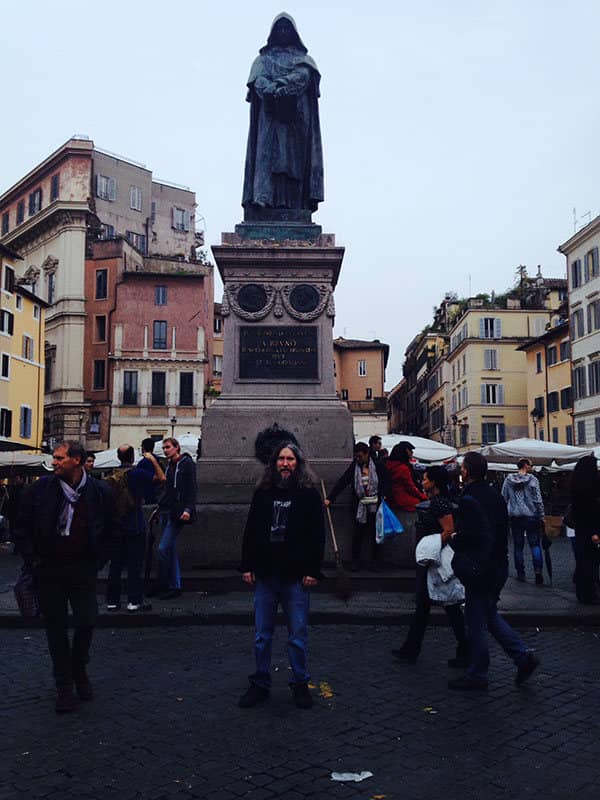But you’re curious bout how long it will take.
And how difficult you might find the journey.
Here’s the good news:
Italian is one of the easiest languages to choose from.
That means one simple thing:
Achieving fluency won’t take long at all.
You just need to understand the factors that slow the process down.
And those that speed it up.
Ready to optimize the learning journey and learn a few memory techniques that will make everything related to learning Italian even easier?
Let’s get started!
How Hard Is Italian to Learn?
Several factors make Italian one of the easiest languages to learn.
First, Italian spelling is relatively straightforward.
You’ll also find countless cognates, which are words that closely resemble the sound and meaning of English words.
Exactly how hard it is to learn Italian boils down to your personal goals, however.
Learning Italian can be broken into three main goals and the amount of study time you can expect to put in:
- Basic fluency (50-60 hours)
- Upper basic (100-120 hours)
- Lower intermediate (240-300 hours)
- Upper intermediate (320-400 hours)
- Proficiency (400-500 hours)
- Full fluency (600-650 hours)
With a time investment this small, no wonder Italian is considered one of the best languages to learn!
But there are some factors that will effect just how fast you’ll go in your personal life.
3 Factors That Affect How Long Italian Takes to Learn
As we go through these factors, it’s important to realize that not all of them might effect you personally.
Still, they’re good to know about. You never know when one of them might raise its ugly head. By attending to this list, you’ll be able to recognize and avoid the issue should you encounter it.
Making Italian A Numbers Game
Many people trick themselves into thinking they need to learn thousands upon thousands of words.
That’s just not true.
In fact, the amount of words you need to be fluent isn’t that high.
Of course, it can feel that way, especially if you’re new to memorizing vocabulary.
Focus on the small steps. Even if fluency in Italian requires tens of thousands of words (which it doesn’t), you capable of developing the mental strength that will get you to the goal.
Not Making The Time
As you’ve just learned, basic fluency requires 50-60 hours of study.
Not time spent fiddling on an app.
Serious time spent using the Big Five of Language Learning:
- Memorizing
- Reading
- Writing
- Speaking
- Listening
No one is an exception to the rule. You need to weave these activities together and do so for long enough for learning to take place. The science of interleaving proves it.
Not Using The Best Possible Resources
Many people fail to make progress because they’re seduced by shiny new object syndrome.
They get an Italian textbook or course, and the minute they feel bored, they’re searching for the next one.
You’re much better limiting how many resources you gather and being thorough about using them.
You’ll save both time and money. And you’ll enjoy a massive sense of accomplishment because you completed the resources you already invested in.
Now go one step further: Don’t just complete the resources. Review those resources several times. This is what polyglots do in order to develop fluency in several languages.
How Long Does It Take to Be Fluent in Italian?
I’ve given you the basic time expectations above. These are given based on the Common European Framework of Reference for Languages, or CEFR.
But the truth is that authentic language learning never ends.
I’ve spent far longer than 650 hours on learning a variety of languages. And I keep studying and practicing because reading, writing, speaking, listening and memorizing are key.
Maintenance is a real thing. You can even loose your mother tongue if you don’t use it. This is a process called linguistic deskilling.
So the answer is that you can become very good in Italian in 650 hours. But you’ll still want to study it for life.
5 Memory Techniques to Speed Up the Italian-Learning Process
With all these points in mind, let’s now turn to the most powerful memory techniques you can use to make your journey to fluency even faster.
Please don’t think of these as independent techniques. They work together, ideally in combination with the Big Five I shared with you above. We’re going to go into each of them in great detail.
One: Speak Italian Daily
You might be thinking…
Hang on! I haven’t even learned Italian yet… how am I supposed to speak it?
It’s a good question, and the answer will empower your procedural memory.
You see, as soon as you have an Italian textbook, you can start reading right away.
Even if it’s not much, an Italian grammar table is still something you can read aloud. Or you can “shadow” what a language speaker is saying through a resource like Pimsleur for Italian.
Don’t worry about not understanding what you’re saying. Speaking as soon as possible is a key part of learning a new language.
Two: Read From Day One
As I just mentioned, speaking a grammar table aloud is a great way to get started.
The key is to find graded readers that you find interesting and serve your current level. Look no further than my friend Olly Richards’ Story Learning Books for that. He’s got them for Italian.
Dictionaries are another great reading resource. Don’t be fooled by language teachers who discourage using dictionaries.
That’s kind of silly. Dictionaries are where they keep the words!
You’ll also find lots of Italian phrases in good Italian dictionaries, so make sure to have a look inside before you pick on.
Three: Get In Lots of Listening Practice
When I was younger, getting my hands on language learning materials was difficult and costly.
These days, it’s as simply as switching on Netflix, which is a powerful language learning resource.
You can use Netflix in a few ways:
- Watch original Italian language movies with English or Italian subtitles on
- Watch any movie with Italian dubbing on
- Switch between the above options
Italian podcasts are also great for listening. But the wonderful thing about movies is that you can see the context. This helps you guess what the meaning might be as you’re learning.
Some language learning teachers, such as the authors of my current Latin textbook, call this “anticipatory listening.” You’re literally honing your attention and learning faster because you’re trying to solve a puzzle.
Four: Write In Italian Often
Far too many language learners leave out writing from their practice.
But getting your hands involved in the language learning process is powerful. Memory expert Lynne Kelly has said that the ancient memory technique of using the hands is a powerful encryption tool.
One powerful way to get in lots of writing practice is to memorize a set of words or phrases. Later, test yourself by writing them down. Then let some more time pass before you check your writing against the record.
Scientists have studied this exact process and call it active recall.
Five: Memorize Italian Words And Phrases
Before you can test yourself, it’s important to know how to memorize.
My favorite process involves using the Memory Palace technique.
To use it, place mnemonic images along a familiar journey. I give an example of how to do this with Italian vocabulary in this video:
Other ways to rapidly absorb Italian involve:
All of these involve spaced repetition, which is essential for making faster progress.
Be Smart And You’ll Learn Italian Faster
At the end of the day, learning Italian involves discipline, strategy and the best possible resources.
You’re completely capable of doing it.
And if you’d like more help when it comes to the memory aspect, get my FREE Memory Improvement Kit:
It’s designed to help you master the memory aspect of learning.
Sure, it means stepping back for an hour or two in order to learn the Memory Palace for language learning.
But let me ask you this:
Would you not spend the time it takes to go and buy a suitcase if you needed one for your next trip to Italy?
Probably you’d consider that quick detour not only essential, but worth every minute.
Spending a small amount of time to master your memory is just like that.
You’ll be able to take the Italian you learn with you everywhere.
All that’s left is consistent action.
Are you ready to get started?
Then let’s do this thing!
Now then… all this talk of Italian reminds me of the last time I was there to research Giordano Bruno, the great Italian memory master of the Renaissance. Here’s a pic from the trip!

Related Posts
- How Hard Is It to Learn Italian? The Best Answer & Learning Tips
Is learning Italian easy? Potentially, yes. But only if you rig the game right based…
- Stoic Secrets For Using Memory Techniques With Language Learning
Christopher Huff shares his Stoic secrets for using memory techniques when learning a language. You'll…
- How to Learn Italian: 3 Epic Techniques for Learning Italian Quickly
Looking for tips on how to learn Italian? This article teaches the best way to…









